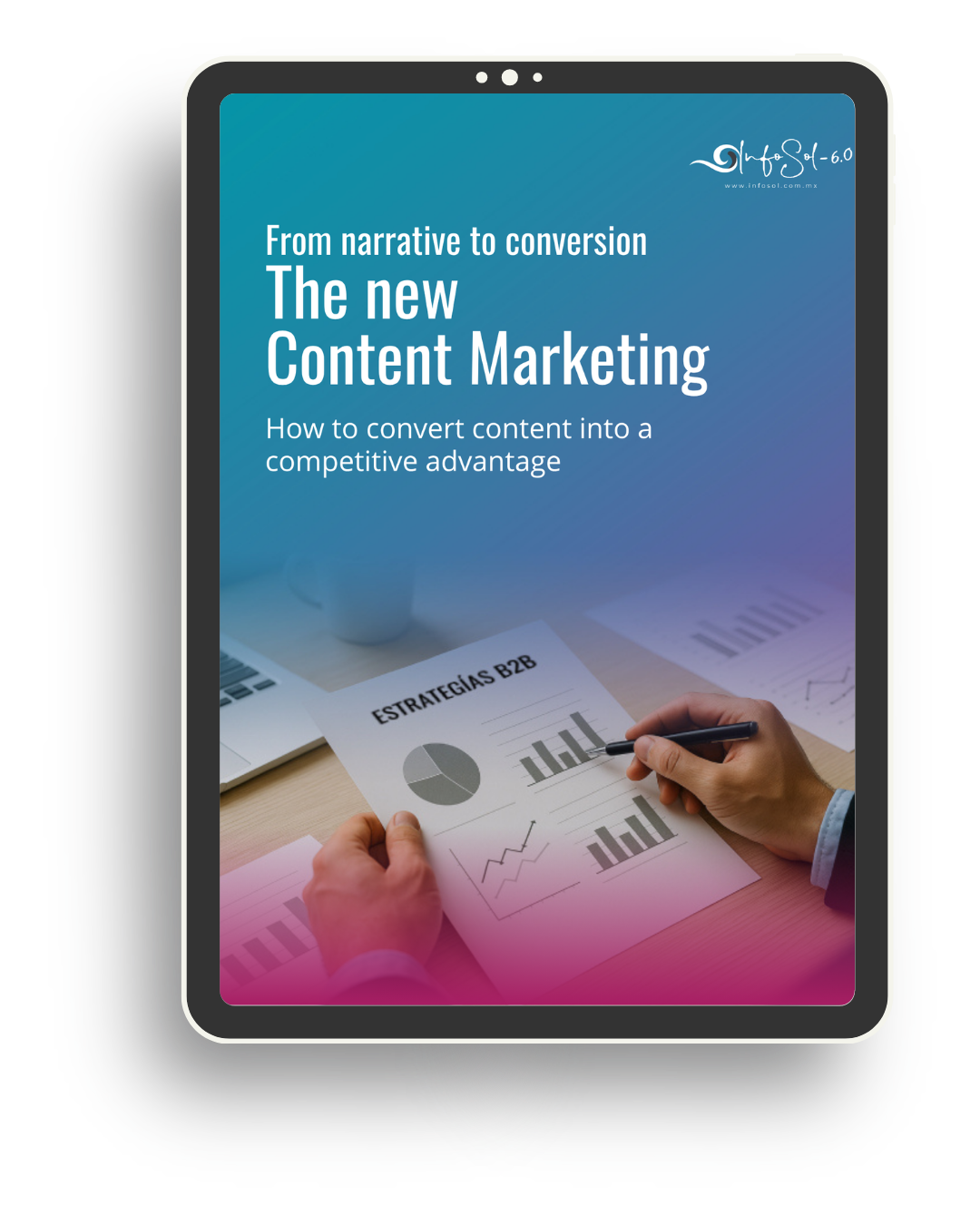In an increasingly competitive digital landscape, public relations and SEO form the perfect duo for brands that want to appear not only on Google but also in AI-generated search results. Integrating both approaches transforms visibility into trust and builds sustainable positioning that goes beyond short-term campaigns.
Beyond the traditional benefits of public relations—such as reputation and credibility building—integrating PR with SEO amplifies a brand’s reach in digital environments. This combination turns visibility into organic discovery and sets the foundation for brands to strengthen their authority in search engines and be recognized by AI systems.
To better understand the value of integrating PR with SEO, it’s useful to compare their return on investment (ROI) with other digital channels. While some tactics deliver fast but unsustainable results, others—like SEO—take longer to mature but generate compound, long-term performance. The following table illustrates how different channels behave in terms of ROI and time to break even.
Average ROI by digital marketing channel
| Channel | Average ROI | Time to break even |
| SEO | Hightest | 12-18 months |
| Email Marketing | High ROI | 6-12 months |
| Content Marketing | Moderate ROI | 9-12 months |
| Paid Search (PPC) | Short-term ROI | 1-3 months |
| Social Ads | Immediate but low sustainability | 1-2 months |
Source: FirstPageSage
These data confirm that while SEO requires patience, its sustained return makes it the most profitable strategy for building digital authority. And this is where public relations play a decisive role: by generating high-quality mentions and backlinks, PR accelerates visibility and multiplies SEO impact—helping brands stand out in both traditional search and AI-generated results.
How SEO and PR work together in the era of generative AI
Before diving into strategy, it’s important to define SEO (Search Engine Optimization). According to Semrush, it is “the set of processes aimed at improving your website’s visibility in search engines (like Google), with the goal of driving more organic traffic.” Its purpose is to make content more accessible to users and more relevant when someone searches for information they need.
In this context, SEO-driven public relations become a key tool for brands to maintain visibility and relevance. Integrating brand positioning tactics—the process of building a clear, differentiated image in the consumer’s mind—into your communication strategy allows you to amplify reach, strengthen brand authority, and build credibility with both audiences and search engines.
SEO has evolved. It’s no longer just about technical optimization—it’s about building reputation and trust. Digital PR acts as a bridge between valuable content and sustainable positioning, helping brands:
- Position themselves as industry or niche experts
- Increase visibility in search rankings (SERPs) and AI-generated platforms
- Strengthen online reputation through trusted media mentions
- During crises, bury negative content and highlight valuable, positive information
How to rank on Google and in AI responses: apply a combined SEO + PR strategy
1. Keyword research and selection
Every effective SEO-led PR strategy begins with in-depth keyword research that connects with real user search intent. It’s not just about finding popular terms—it’s about understanding how, when, and why your audience searches for solutions.
A well-executed keyword strategy ensures content gains visibility in search results, appears in AI summaries, and earns long-term trust and relevance.
Recommendations:
- Define your buyer persona, information needs, and pain points to understand your target audience.
- Use tools such as Semrush, Answer the Public, or Google Trends to uncover keyword ideas and positioning opportunities.
- Focus on long-tail and semantic optimization—including FAQ-style queries—not just high-volume search terms.
Keyword research with this approach ensures each piece of content is built on a solid foundation and directly responds to what your audience is searching for. This enables your PR + SEO strategy not only to boost visibility in search engines but also to increase your chances of being referenced by generative AI systems, reinforcing your brand’s authority in the digital ecosystem.
2. Building backlinks with reputational value
Backlinks remain a cornerstone of off-page SEO strategies. In fact, a Semrush ranking factors study found that eight of the top twenty factors influencing search results are related to backlinks. This correlation highlights why combining SEO (on-page + technical optimization) with PR (media mentions and earned links) is one of the strongest drivers of visibility in both search results and generative responses.
However, it’s not the number of links that matters most—it’s their quality and contextual relevance. PR plays a crucial role in generating high-value backlinks through:
- Features in high-authority media, which provide both link equity and reputational validation.
- Opinion articles and thought leadership pieces that position the brand as an industry expert.
- Coverage in specialized blogs and organic mentions, adding contextual relevance and credibility.
- Influencer marketing campaigns with strategic creators who amplify messages and generate links within targeted communities.
So how does this influence AI-generated results and AI Overviews?
Beyond boosting search visibility, backlinks increase the likelihood that a site will be cited by AI tools. That’s because AI models don’t create answers from scratch—they draw from trusted external sources already evaluated by search engines based on authority, relevance, and credibility.
A SurferSEO study analyzing 405,576 AI summaries found that pages ranking within the top five Google positions were the most likely to appear in generative results. Therefore, building high-quality backlinks remains the most effective way for a website to gain authority and be referenced by both search engines and AI systems.
Did You Know?
92.3% of the top 100 ranked domains have at least one backlink—confirming the decisive role of link-building in SEO and AI-generated responses.
(Source: Semrush)
3. Optimizing content marketing
Keyword research only creates value when translated into well-optimized content—content that meets real user needs while being understandable to both search engines and AI.
Optimized content is not just keyword-rich—it’s useful, structured, and brand-aligned.
Effective content should be:
- Useful, clear, and relevant, addressing specific user needs or questions.
- Technically optimized: titles, meta descriptions, header hierarchy, clean URLs, and internal linking.
- Industry- and solution-focused, rather than overly generic.
- Adapted to semantic and generative search, where AI interpretation depends on coherence, consistency, and depth.
An SEO-led PR strategy ensures that key messages don’t remain confined to your website—they’re amplified through owned and earned channels, reinforcing both reputation and digital authority.
DOWNLOAD OUR FREE EBOOK
Start communicating with purpose.

4. Integrating SEO into social media
Social platforms no longer just amplify reach—they’re now an essential component of digital positioning strategies. Their impact goes beyond short-term visibility; they also build signals that enhance brand authority in both search engines and AI platforms.
Integrating SEO into social media helps you:
- Strengthen your brand’s search profile by expanding your digital footprint with indexed posts and optimized profiles.
- Boost engagement and social interaction, generating referral traffic and indirectly influencing search rankings.
- Communicate positive signals of credibility and relevance, which some AI systems and search engines factor into their authority models.
- Ensure message consistency across owned, earned, and social channels, reinforcing recognition and brand coherence.
5. Measuring impact in PR + SEO
“If you can’t measure it, you can’t improve it.” Measuring your SEO-driven PR strategy is essential to optimize performance and get closer to your positioning and business goals.
Key actionable metrics to track:
- Content ranking positions on Google and Bing
- Number of backlinks earned from media coverage
- Mentions in generative AI and platforms like ChatGPT and Gemini
- Web traffic from earned content
- Engagement and interactions across social media
PR + SEO in the new era of digital discovery
Evolving your traditional PR strategy into a SEO-led public relations strategy represents the intersection of credibility, visibility, and business opportunity generation.
In today’s environment—where users not only search but also consult AI assistants—the priority must be to create authoritative, well-optimized content that earns space in trusted sources frequently referenced by AI models.
Implementing modern SEO tactics integrated with PR is the formula for ensuring your brand is not only found, but also remembered, cited, and recommended.
Ready for Your Brand to Build Authority in Search and Be Recommended by AI?
FAQs
1. How can I make my brand appear on Google and in AI results?
Combine SEO and digital public relations. SEO optimizes your site’s structure and content for organic searches, while PR generates backlinks, mentions, and validation from credible media outlets. This synergy strengthens brand authority, enhances visibility, and increases the likelihood that your content will be cited by generative AI models.
2. What are the benefits of integrating SEO and public relations?
Integrating SEO and PR multiplies visibility, reputation, and return on investment. PR generates high-quality links and external trust, while SEO leverages that authority to improve rankings and traffic. Together, they turn media exposure into organic discovery, drive sustainable positioning, and strengthen brand credibility across search engines and AI platforms.
3. Why are backlinks so important for ranking?
Backlinks act as votes of confidence for your website. The more relevant links you gain from authoritative media sources, the higher your credibility with Google and AI systems. Strategic public relations help earn these links through articles, interviews, and collaborations, strengthening your digital reputation and organic positioning.
4. How can you measure the impact of an SEO + PR strategy?
Evaluate combined metrics such as ranking positions, referral traffic, backlink quality, AI mentions, social engagement, and domain authority. Tools like Google Analytics, Semrush, and Ahrefs help visualize how PR actions enhance SEO performance, demonstrating tangible results in visibility, reputation, and opportunity generation.





